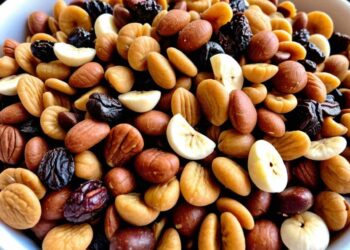Food preservation has come a long way, and two popular technologies in the modern kitchen are freeze dryers and dehydrators. Each offers unique benefits and operates on very different principles.
In this article, we’ll explore how both machines work, weigh their advantages and disadvantages, and help you decide which might be best for your needs.
How They Work?
Freeze Dryer Machines:
Freeze drying—also known as lyophilization—is a multi-step process:
- Freezing: The food is rapidly frozen, locking in the flavor and structure.
- Primary Drying (Sublimation): The machine creates a low-pressure environment. Under these conditions, the frozen water in the food sublimates, meaning it turns directly from ice into vapor without passing through a liquid stage.
- Secondary Drying: Any remaining bound moisture is gently removed, resulting in a very dry product.
This method preserves the cellular structure and much of the nutritional value, flavor, and aroma, making it ideal for high-quality food preservation, pharmaceuticals, and even museum artifact conservation.
Dehydrators:
Dehydrators remove moisture through a more straightforward process:
- Warm Air Circulation: Food is placed on trays, and a fan circulates warm air around it.
- Evaporation: The heat gradually evaporates the moisture over several hours.
- Finish: Once the moisture is sufficiently reduced, the food becomes shelf-stable.
This process is energy-efficient and generally faster and less expensive than freeze drying, although it may slightly alter the texture, flavor, and nutrient content of the food.
Pros and Cons:
Freeze Dryer Machines:
Pros:
- Quality Preservation: Retains much of the original flavor, color, and nutrients.
- Texture and Appearance: Maintains the food’s structure, making it rehydrate beautifully.
- Longevity: Products can be stored for extended periods without degradation.
Cons:
- Cost: Higher upfront investment and operational costs.
- Time: The process can be longer compared to dehydration.
- Complexity: Requires more precise settings and monitoring.
Dehydrators:
Pros:
- Affordability: Generally lower in cost, making them accessible for home users.
- Energy Efficient: Uses less energy and has simpler technology.
- Speed: Often faster for small batches and everyday use.
Cons:
- Nutrient Loss: Some vitamins and flavors may degrade due to prolonged exposure to heat.
- Texture Changes: The final product can be chewier or tougher, sometimes altering the eating experience.
- Limited Preservation: While great for many snacks, dehydrated food may not last as long as freeze-dried items.
Which One Should You Choose?
Your decision depends on your priorities:
- For Best Quality and Nutrient Retention: If preserving the original taste, texture, and nutritional value is paramount (such as for high-end food storage, specialty products, or survival foods), a freeze dryer is worth the investment.
- For Everyday Use and Budget-Friendly Preservation: If you’re looking to make healthy snacks like dried fruits or jerky without breaking the bank, a dehydrator offers a simple, efficient solution.
FAQs:
Which is better, a dehydrator or a freeze dryer?
It depends on your needs. Freeze dryers better preserve nutrients and texture but are expensive and slower, while dehydrators are more affordable and efficient for everyday use.
Is it better to dehydrate or freeze-dry spices?
For spices, dehydration is typically sufficient since freeze drying doesn’t offer significant benefits and costs more.
What are the disadvantages of freeze drying?
Freeze drying is costly, takes longer, requires specialized equipment, and struggles with high-fat or oily foods.
What food cannot be freeze-dried?
Foods with high fat content—like certain cheeses, chocolate, or other oily items—do not freeze-dry well.
Conclusion:
Both freeze dryers and dehydrators play important roles in modern food preservation. Freeze drying excels in quality and longevity but comes at a higher cost and complexity. Dehydrators, on the other hand, provide an accessible, energy-efficient option ideal for everyday use.
By understanding these differences, you can make an informed choice based on your specific needs, whether it’s for gourmet food preservation or crafting your own healthy snacks at home.









Discussion about this post